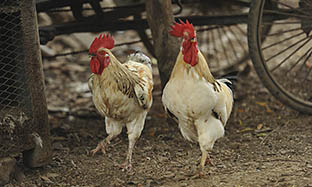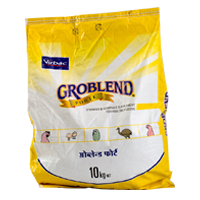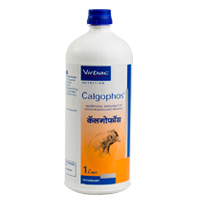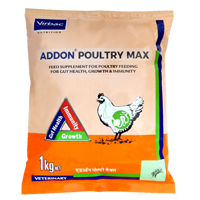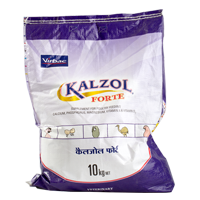
How to select the best feed for poultry
Welcome to our primer on poultry feed. This article will go through the history, varieties, and applications of poultry feed. In addition, we will discuss several popular poultry feed additives and their impacts on birds. Finally, we will discuss how to select the best feed for your chickens, turkeys, ducks, or other fowl. Thank you for your time!
What exactly is feed for poultry?
Chicken feed is made up of a number of substances that give the poultry critical nutrition and energy. The most popular type of poultry feed is feed pellets; however, grain, fresh and frozen veggies, and other animal byproducts may also be utilized. Poultry are omnivores and will eat a wide variety of foods, so manufacturers must create a blend that has balanced nutrition.
What is the role of feed for poultry?
Poultry feed is an important component of the poultry production process and serves several functions. For one thing, it aids in the provision of high-quality food for the birds by supplying them with all of the nutrients they require to develop and thrive. It also helps to prevent illnesses in hens and promotes good feathering and skin growth.
Apart from these advantages, poultry feed can also be used to improve the production of meat or eggs.
What are the best options for healthy feed for poultry?
Poultry feed is an important part of poultry production. The feed must not only give the birds the nutrients and energy they require to grow and produce eggs and meat, but it must also be made in a way that is compatible with the individual demands of the bird. There are numerous poultry feed options available, and it can be difficult to determine which one is best for your birds.
Here are four of the better alternatives:
Green corn: Green maize is a wonderful choice because it has a lot of protein and is low in fat. It also has a strong fiber-to-mineral ratio.
Barley is an excellent choice because it is high in fibre and low in fat. It also has a healthy balance of vitamins and minerals.
Oatmeal: Oatmeal is a fantastic choice for chickens because it is high in fibre and protein. It also has a reduced fat and cholesterol content.
Wheat: Wheat is a fantastic choice for poultry because it has a lot of protein and fibre. It also has a reduced fat and cholesterol content.
How is poultry feed produced?
Poultry feed is often composed of a blend of grains, hay, and legumes. Grains derived from grasses such as corn, wheat, and oats are commonly used. Hay is an excellent chicken feed because it is high in fibre and provides a variety of critical elements such as calcium, potassium, and magnesium. Legumes are an excellent source of protein and nutrients for poultry, but they may contain toxins that must be eliminated before they can be used in feed.
The initial step in the creation of chicken feed is to gather the basic ingredients. Grain, seeds, and legumes are the main foods of chickens and turkeys. These plants are ground up or cut up and spread around a feedlot, where hens and turkeys eat them. The feed is then combined with other elements, such as vitamins, minerals, essential amino acids, acidifiers, & toxin binders, to make a meal for the birds.
The process of poultry feed production is generally divided into the following steps: receiving and cleaning feed raw materials, crushing raw materials, batching, mixing, pelleting, and packaging finished feed products.
There are a lot of factors on which broiler (meat chicken) or layer feed depends. One of the most important is selecting the breed. The feed consumption rate and growth rate of the chicken depend on the breed, your management system, and the weather conditions.
The composition of the chicken feed varies with the varied growth stages of the chicken. The feed producers usually have a 3-stage feeding program, depending on which feed changes as the chickens grow. It basically has the starter feed, the grower feed, and the finisher feed. Some of them have also introduced a withdrawal feed just before the harvest. Compared to all the other feeds, the finisher feed has the lowest composition of protein and is higher in energy. Similarly, in layer and breeder birds, the feeds in different phases of growth have different nutritional values to provide balanced nutrition and optimize egg production.
Which varieties of poultry feed have the most protein?
Grains are the key element in the majority of high-protein poultry feeds. However, there are a few types of poultry feed that have a higher overall protein level, despite the fact that grains are not the primary source of protein. Poultry pellets, broiler feed, and game bird feed are examples of these feeds. Pellets, which are particularly high in protein, are an excellent choice for birds who struggle to receive enough fibre in their diet. Broiler feed is an excellent alternative for birds looking for a high-quality protein source as well as those looking to cut their feed expenses. For those who want to give their birds a variety of proteins as well as vitamins and minerals, game bird feed is an excellent choice.
What should hens never be fed?
Chickens are omnivores and eat a wide variety of foods, but there are several things you should never feed them. Fruit, raisins, grapes, chocolate bars, wheatgrass, gluten-containing oats (including oatmeal cookies), avocados, or coconut milk are examples.
These foods may contain toxic substances that might cause respiratory troubles and stomach discomfort in your hens.
What are the primary nutrients found in feed for poultry?
When it comes to chicken feeding, there are a variety of alternatives available, including whole feeds and specialist diets. Complete feeds often contain all of the nutrients that birds require to stay healthy and productive. Specialized meals, on the other hand, are designed for certain species of birds.
Protein is a key component that is frequently incorporated into poultry feeds. This provides energy for the birds and maintains proper development during growth phases. Chicken feed contains trace elements such as zinc and copper, which are necessary for good feather development and bone health, among other things.
Vitamins A, D3, and E, choline chloride (a type of vitamin B12), calcium carbonate/dicalcium phosphate extractive aids (to stimulate egg production), water-soluble carbohydrates like maltose, or complex sugars like trehalose are all key nutrients found in chicken feed (for quick absorption into their bloodstream). As you can see, there is a long list of substances in bird feed that are suitable for animal production!
To learn more about Virbac products, please visit the Virbac India website.

